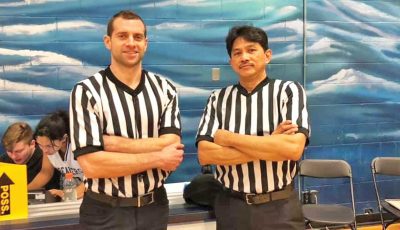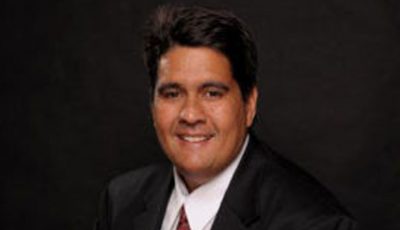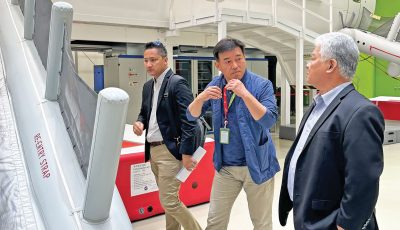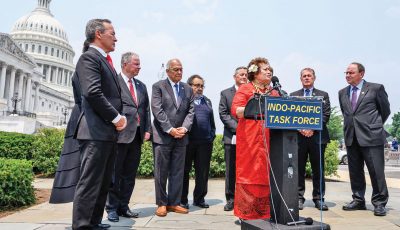Nip-and-tuck
A friend on Saipan came back from an extended holiday in Minnesota properly nipped and tucked (“nip” is to tweak and “tuck” is to pleat and fold in cosmetic surgery terms), and very proud of it. I was given the impression that it was done for my sake.
Chosen for her girlish ways though a couple of years my senior, with requisite wrinkles prominently in display, I was flabbergasted to see the skin pulled and taut, a grotesque change though her friends thought it splendid. That began the denouement of what otherwise was a growing loving relationship. Not finger pointing to a fault or flaw, I simply recognize a difference in view.
A previous relationship is not the object of our reflection. It is the culture of nip-and-tuck permeating SoKor, rendering the cheaper local surgical procedure in Dong Bei a tourist attraction.
I noticed this in the early ’80s when the SoKor economy turned robust, and the bulgogi (marinated meat) and chap chae (noodles and veggies) moved off the wealthy’s fare into the dining tables of Korea’s lumpenproletariat and hoi polloi. Tummy overhang and double chin were no longer uncommon, culturally desired as a sign of wealth and progress; but the younger generations’ wrinkles gave way to the surgical scalpel that saw increased sale of padded Victoria’s Secret bras.
Japan’s cosmetic surgery flourished, welcomed the opening of Korea’s market, which in turn became upscale, pushing the trade across the Yalu to Dong Bei where I reside. Scalpels from Harbin to Dalian suddenly became popular, and as Protestant Christians sanctified wealth as a divine gift, so did being of good looks for the hanggul saram (South Koreans) sacral!
A colleague in Liaoning early on went for dental surgery that was botched and the dentist’s office forked out $50,000 to settle out of court. It is not unusual for 20-year-old students in my class to be wearing braces; professionals get implants to install permanent teeth to avoid the “embarrassment” of removable dentures.
The Philippines, sophisticated in medical and dental science practice, has been a hub for the growth industry of cosmetic surgery. An aunt, Dad’s sister, married a respected dentist, and their twin mastered dental probes, picks, mirrors, and burs. It used to be that expats in other places came to order postisos (dentures), or get chipped teeth patched in Pinas. Not any more, convenient and affordable implants are no longer uncommon.
So has nip-and-tuck. Many of my schoolmates went into the medical, dental, and nursing professions. They are not a suffering tribe. Their palatial homes dwarf my austere 3-bedroom abode in Dong Bei, and I live in a community of the crème de la crème of Shenbei in Shenyang!
The nip-and-tuck was a burgis (Pinoy’s bourgeoisie) privilege done in healthy surroundings abroad, or cheaply performed in backrooms as the practice was not only socially unacceptable but also religiously heretical. The wonder and awe of divine creation and the creative process is not to be messed with (says Señor Francesca Argentina il Pappa in last week’s visit to the land of Prinsipe Felipe), so as a matter of Church teaching, contraceptives remain a firm “no-no.”
Like the pill that is widely used by Pinoy Catholics, bolstered by Noynoy Aquino’s legislative triumph on family planning, the nip-and-tuck crowd equally increased even among Roman Catholics, without the stigma associated with the procedure.
While I resided in Canada and the U.S., I made periodic Pea Eye trips travelling through HK on my way just to get used to the mass of humanity that I confronted and be accosted by, the faces of mass delihensiya at the International Airport, later named after Ninoy Aquino. Living in China, I am inured to mass humanity, but to the culture of youth that leads numerous grannies to wear Levi’s, and the well-stock cosmetic sections of duty-free shops that earns their keep simply with their supply of “whitening” cream, the jia (fake) look is in vogue.
With implants for dentures, the light-skin-of-being preferred over the shades of tan, and the plethora of youthful accoutrement in department store’s boutique cosmetics, the future no longer requires surgical nip-and-tuck.
Going through Ninoy Aquino International Airport with its ample display of nipped-and-tucked denizens, we are struck by the irony of a place named after a guy who made a serious political statement with his life, surrounded by the trappings and paraphernalia that is no more than mirage and illusion, and the mockery is commercial sarcasm objectified by the shallowness of resolves to vanquish age-long economic inequity and unwilling to pour out contents of sparsely lined purses to the cause of justice. Delihensiya remains the cultural ethos.
I’ll hang on to my tummy overhang, and keep the second chin to jiggle at the wrinkles when I giggle. I hold a reading glass handy and install Velcro on the shoe. China holds and looks at rotund characters as blessedly endowed. Blimey, I am.



























